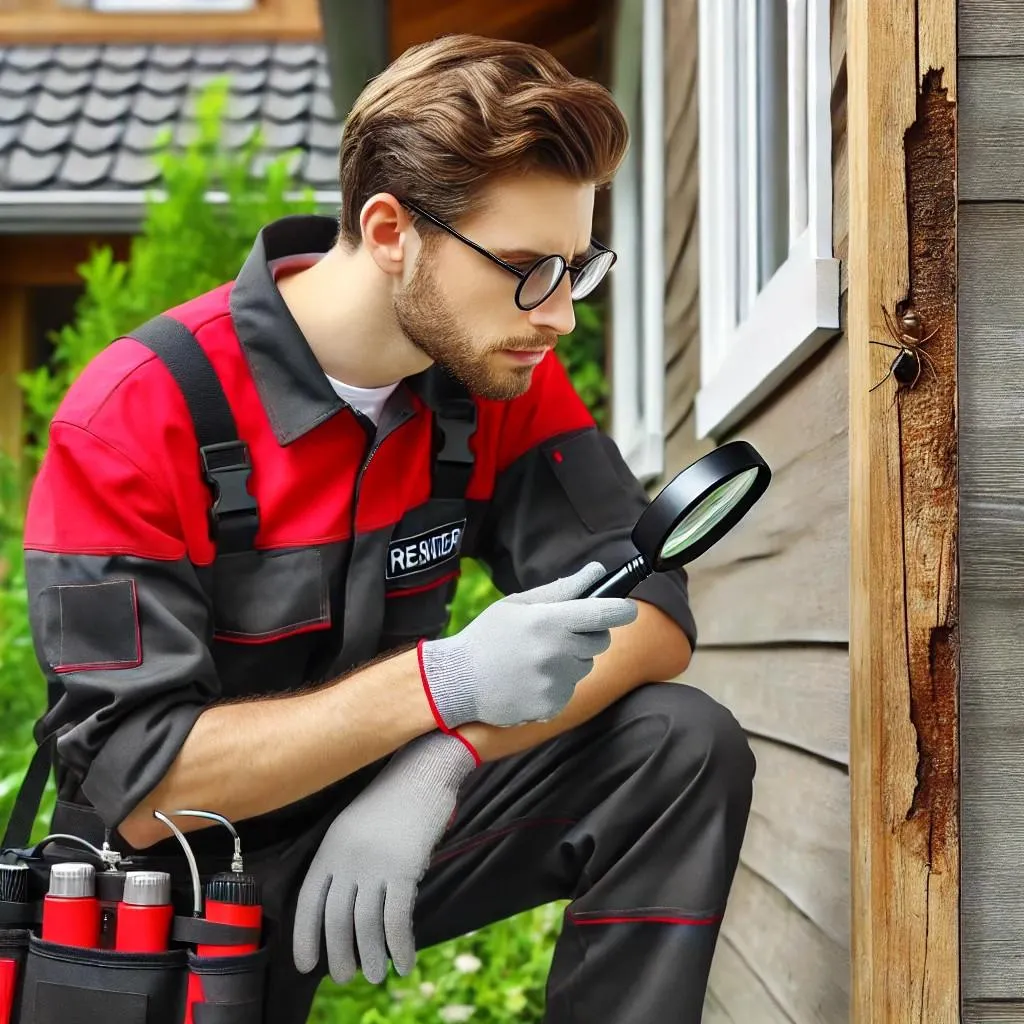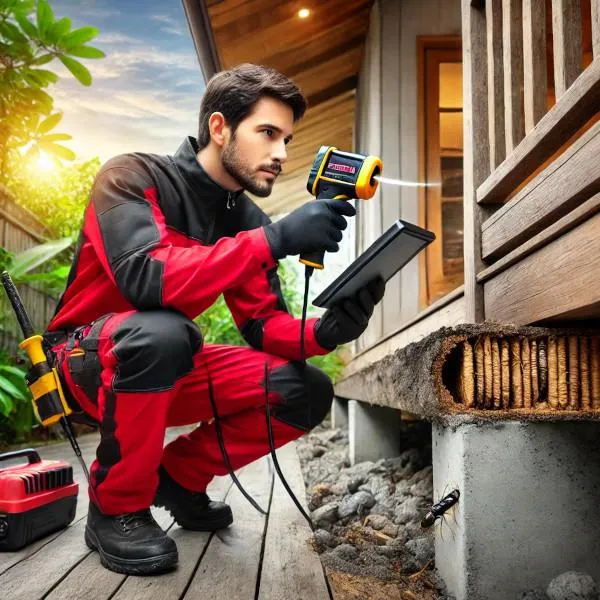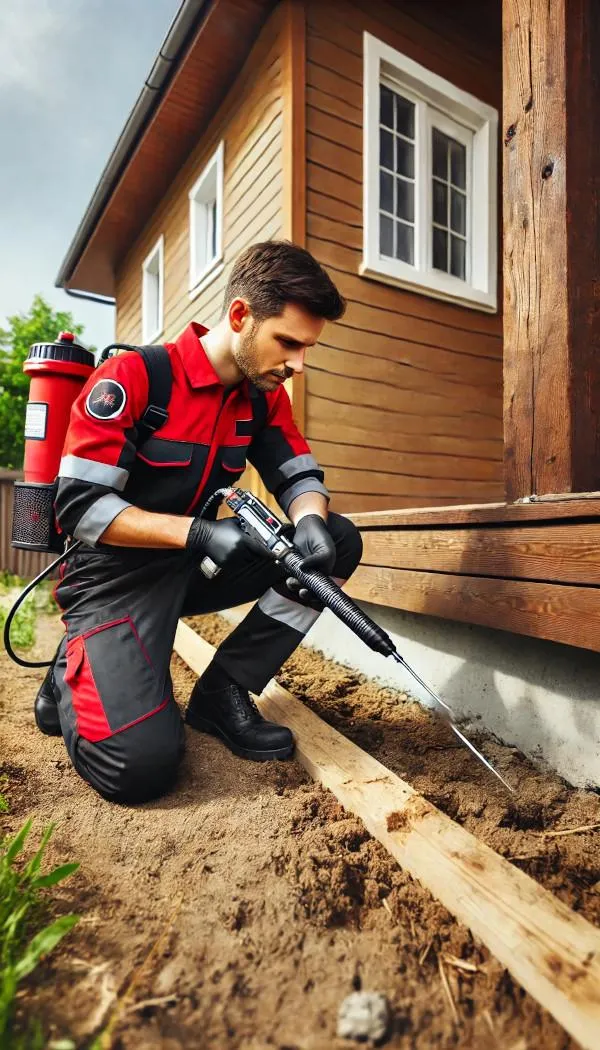Termite Control Services
Protect Your Home from Silent Invaders
Termites can undermine the structural integrity of your home, causing extensive damage that is costly to repair. Our professional termite control services are designed to detect, eliminate, and prevent termite infestations effectively. We utilize the latest techniques and environmentally safe treatments to protect your property and give you peace of mind. Trust us to keep your home termite-free with solutions that last.
What Are Termites?
TRegular termite inspections are crucial to maintaining the integrity of your property. Since termites often remain hidden within walls, floors, and other wooden structures, they can cause extensive damage before being detected. Early detection through a professional inspection can save you from expensive repairs and ensure that your home remains safe and secure.


Why Termite Inspections Are Essential
Regular termite inspections are crucial to maintaining the integrity of your property. Since termites often remain hidden within walls, floors, and other wooden structures, they can cause extensive damage before being detected. Early detection through a professional inspection can save you from expensive repairs and ensure that your home remains safe and secure.
Key Reasons to Schedule a Termite Inspection:
Prevent Structural Damage: Early detection can prevent extensive damage to your home's foundation and wooden structures.Save on Repair Costs: Catching an infestation early can save you thousands in potential repair costs.Protect Your Property Value: Regular inspections ensure your home remains in good condition, preserving its value.
How to Perform a Termite Inspection
Conducting a thorough termite inspection requires a keen eye and knowledge of termite behavior. Here's a step-by-step guide on how professionals typically carry out an inspection:
Step 1: Exterior Inspection
The process begins with a comprehensive inspection of the exterior of your home. This includes checking the foundation, eaves, and wooden structures for signs of termite activity, such as mud tubes, discarded wings, and damaged wood. Professionals also look for potential entry points, such as cracks in the foundation or gaps around utility lines.
Step 2: Interior Inspection
Next, the inspection moves indoors, where specialists check the basement, crawl spaces, and attic for signs of infestation. They use specialized tools to detect termites behind walls and beneath floors. Moisture meters and infrared cameras might be employed to identify areas where termites are likely to thrive.
Step 3: Identification of Termite Species
Different termite species require different treatment approaches. Identifying the species is a critical part of the inspection process, ensuring that the correct treatment plan is developed.
Step 4: Reporting and Recommendations
After the inspection, you'll receive a detailed report outlining the findings. If termites are detected, the report will include recommendations for treatment and prevention measures to protect your home.


Effective Termite Treatment Options
If termites are found during the inspection, prompt treatment is essential to stop the infestation and prevent further damage. Here are some of the most effective termite treatment options available:
1. Liquid Termite Treatments
Liquid treatments involve applying a termiticide around the perimeter of your home. This creates a barrier that termites cannot cross, effectively protecting your home from future infestations. It can also be injected directly into infested wood and soil to kill existing termites.
2. Termite Bait Systems
Termite baiting is another highly effective method. Bait stations are placed around your property, attracting termites and delivering a slow-acting toxin. Termites bring the bait back to their colony, effectively eliminating the entire colony over time.
3. Fumigation
For severe infestations, fumigation may be necessary. This involves sealing the structure and filling it with a gas that penetrates wood and kills termites throughout the entire building. While highly effective, fumigation requires you to vacate the premises temporarily.
4. Wood Treatments
Treating wood with borates or other chemicals can help protect it from termite attacks. This is especially useful for new construction or in areas where termites are prevalent.
5. Preventive Measures
After treatment, implementing preventive measures is key to keeping termites at bay. This includes reducing moisture around your home, sealing cracks, and regularly inspecting and maintaining wooden structures.
Protect Your Home Today
Don't wait until it's too late—protect your home from the destructive power of termites by scheduling a professional inspection today. Our team of termite control experts is here to provide you with the most effective solutions, ensuring your property remains safe and termite-free.
Contact us today to learn more about our termite control services and how we can help safeguard your home against these silent invaders.
FAQS
How often should I have pest control services performed?
The frequency of pest control services depends on the type of pests and the severity of the infestation. For general pest prevention, we recommend quarterly treatments. However, for specific issues like termites or bed bugs, more frequent visits may be necessary. Our specialists will assess your situation and recommend the best schedule for your needs.
Are your pest control treatments safe for children and pets?
Yes, the safety of your family and pets is our top priority. We use environmentally-friendly and low-toxicity products that are designed to be safe for both children and pets while still being highly effective against pests.
What should I do to prepare for a pest control treatment?
Preparation steps may vary depending on the type of pest treatment. Generally, we recommend clearing any clutter, storing food items, and ensuring easy access to areas that need treatment. For specific pests like bed bugs, more detailed preparation may be required, and we’ll provide you with clear instructions before our visit.

